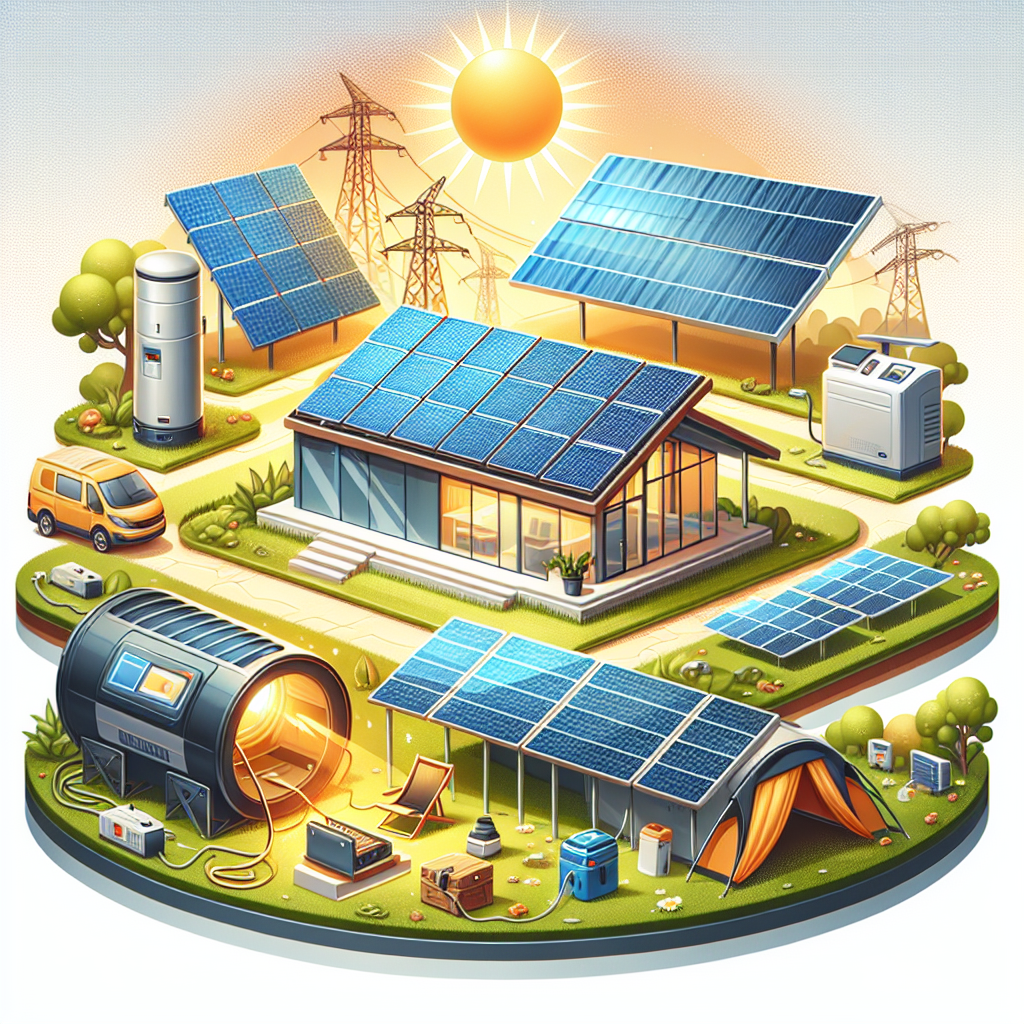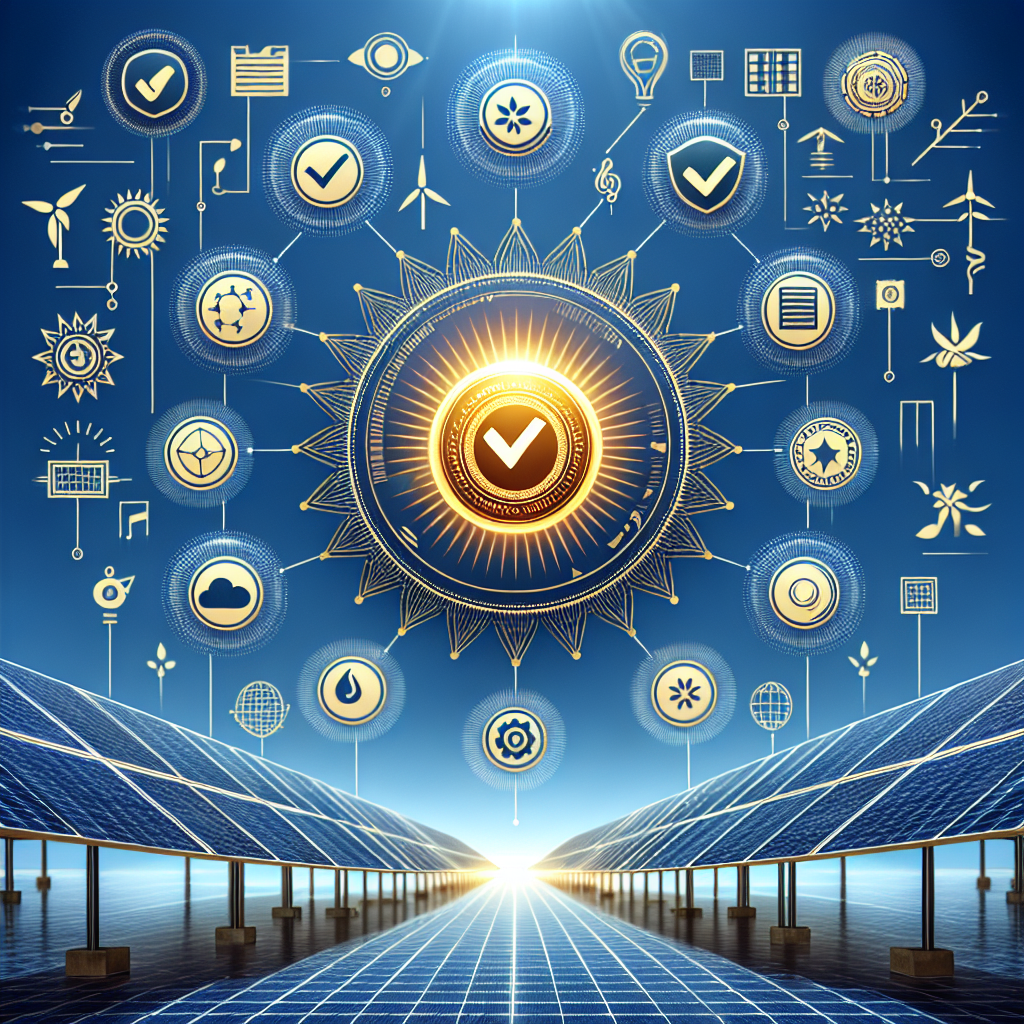Solar power is a growing trend in Australia.
With the country’s abundant sunshine, it’s an ideal place for harnessing solar energy.

But with so many solar panel and inverter brands on the market, how do you know which ones to trust?
This article aims to guide you through the process.
We’ll highlight the most reliable solar panel and inverter brands available in Australia.
We’ll also delve into what makes a brand trustworthy, from product quality and performance to warranty periods.
By the end of this guide, you’ll be well-equipped to make an informed decision about your solar power investment.
Understanding Solar Power in Australia
Australia is a world leader in solar power generation.
With over 2.4 million solar power systems installed across the country, it’s clear that Australians are embracing this renewable energy source.
The country’s sunny climate makes it an ideal location for solar power, offering homeowners and businesses a sustainable way to reduce their energy costs and carbon footprint.
The Importance of Trusted Brands
When investing in a solar power system, choosing trusted solar panel and inverter brands is crucial.
These brands have a proven track record of reliability, performance, and customer satisfaction. They also adhere to industry standards and regulations, ensuring the safety and efficiency of their products.
- Reliability: Trusted brands offer products that are built to last, ensuring that your solar power system will continue to generate energy efficiently for many years.
- Performance: High-quality solar panels and inverters from reputable brands are designed to maximize energy production, even in less-than-ideal conditions.
- Customer Satisfaction: Trusted brands are committed to customer satisfaction, offering comprehensive warranties and excellent customer service.
- Safety and Efficiency: By adhering to industry standards and regulations, trusted brands ensure the safety and efficiency of their products.
Top Trusted Solar Panel Brands in Australia
Australia is home to a wide range of solar panel brands. However, not all are created equal.
Some brands stand out for their quality, performance, and customer satisfaction. These are the brands that have earned the trust of Australian homeowners and businesses.
Here are the top trusted solar panel brands in Australia:
- SunPower
- LG Solar
- Trina Solar
- Q CELLS
- Canadian Solar
- Jinko
- Longi or Suntech or JA
“ by Riccardo Trimeloni (https://unsplash.com/@trime)”
by Riccardo Trimeloni (https://unsplash.com/@trime)”
SunPower
SunPower is a global leader in solar innovation. Their panels are known for their high efficiency and durability.
With a strong warranty and excellent customer service, SunPower has earned a reputation as a trusted brand in Australia.
“ by Biel Morro (https://unsplash.com/@bielmorro)”
by Biel Morro (https://unsplash.com/@bielmorro)”
LG Solar
LG Solar offers high-quality solar panels that are built to last. Their panels are highly efficient, ensuring maximum energy production.
With a strong presence in Australia, LG Solar is a brand that consumers can trust.
“ by American Public Power Association (https://unsplash.com/@publicpowerorg)”
by American Public Power Association (https://unsplash.com/@publicpowerorg)”
Trina Solar
Trina Solar is one of the world’s largest solar panel manufacturers. Their panels are known for their reliability and performance.
With a commitment to sustainability, Trina Solar is a trusted brand in the Australian market.
“ by Scott Webb (https://unsplash.com/@scottwebb)”
by Scott Webb (https://unsplash.com/@scottwebb)”
Q CELLS
Q CELLS is a leading solar panel brand in Australia. Their panels are designed for durability and high performance.
With a strong warranty and excellent customer service, Q CELLS is a brand that Australians can trust.
“ by National Cancer Institute (https://unsplash.com/@nci)”
by National Cancer Institute (https://unsplash.com/@nci)”
Canadian Solar
Canadian Solar is known for its high-quality solar panels. Their products are designed for reliability and efficiency.
With a strong presence in Australia, Canadian Solar is a trusted brand in the solar industry.
“ by Giorgio Trovato (https://unsplash.com/@giorgiotrovato)”
by Giorgio Trovato (https://unsplash.com/@giorgiotrovato)”
Top Trusted Solar Inverter Brands in Australia
Just as with solar panels, the quality of solar inverters varies greatly. A reliable inverter is crucial for a high-performing solar system.
Here are the top trusted solar inverter brands in Australia:
- Fronius
- SMA
- Enphase
- SolarEdge
- ABB (now FIMER)
- Sun grow
- Good we
- Solis
“ by Laura Cros (https://unsplash.com/@locreaphoto)”
by Laura Cros (https://unsplash.com/@locreaphoto)”
Fronius
Fronius is a global leader in solar inverter technology. Their inverters are known for their reliability and efficiency.
With a strong warranty and excellent customer service, Fronius is a trusted brand in Australia.
“ by Justin Lim (https://unsplash.com/@justinlim)”
by Justin Lim (https://unsplash.com/@justinlim)”
SMA
SMA offers high-quality solar inverters that are built to last. Their inverters are highly efficient, ensuring maximum energy conversion.
With a strong presence in Australia, SMA is a brand that consumers can trust.
“ by American Public Power Association (https://unsplash.com/@publicpowerorg)”
by American Public Power Association (https://unsplash.com/@publicpowerorg)”
Enphase
Enphase is one of the world’s largest solar inverter manufacturers. Their microinverters are known for their reliability and performance.
With a commitment to innovation, Enphase is a trusted brand in the Australian market.
“ by Ricardo Gomez Angel (https://unsplash.com/@rgaleriacom)”
by Ricardo Gomez Angel (https://unsplash.com/@rgaleriacom)”
SolarEdge
SolarEdge is a leading solar inverter brand in Australia. Their inverters are designed for durability and high performance.
With a strong warranty and excellent customer service, SolarEdge is a brand that Australians can trust.
“ by Vivint Solar (https://unsplash.com/@vivintsolar)”
by Vivint Solar (https://unsplash.com/@vivintsolar)”
ABB (now FIMER)
ABB, now known as FIMER, is known for its high-quality solar inverters. Their products are designed for reliability and efficiency.
With a strong presence in Australia, ABB (FIMER) is a trusted brand in the solar industry.
“ by Nikhil Mitra (https://unsplash.com/@nikhilmitra)”
by Nikhil Mitra (https://unsplash.com/@nikhilmitra)”
What Makes a Solar Brand Trustworthy?
When it comes to solar power, not all brands are created equal. Trustworthy solar brands stand out in several key areas.
Firstly, they offer high-quality products. This means solar panels and inverters that are durable, efficient, and reliable. They use advanced technology and adhere to strict manufacturing standards.
Secondly, they provide excellent customer service. This includes offering comprehensive warranties, prompt and effective problem resolution, and helpful customer support.
Finally, they have a strong reputation in the industry. This is often reflected in positive customer reviews and industry awards.
In summary, a trustworthy solar brand:
- Offers high-quality, reliable products
- Provides excellent customer service
- Has a strong industry reputation
Choosing a trustworthy brand can give you peace of mind that your solar system will perform well and last for many years.
The Role of Warranties and Certifications
Warranties and certifications play a crucial role in establishing a solar brand’s trustworthiness. A comprehensive warranty indicates that the brand stands behind its products and is willing to rectify any issues that may arise.
Certifications, on the other hand, demonstrate that the brand’s products meet certain industry standards. This could be in terms of safety, performance, or environmental impact. Brands with numerous certifications are likely to produce high-quality, reliable solar equipment.
Solar Panel and Inverter Features to Consider
When choosing solar panels and inverters, there are several key features to consider. These features can significantly impact the performance, efficiency, and longevity of your solar power system.
For solar panels, look for high efficiency, robust construction, and excellent performance under various weather conditions. The panel’s efficiency determines how much sunlight it can convert into usable electricity. A well-constructed panel can withstand harsh weather and last for many years.
Inverters, on the other hand, should have a high conversion efficiency, reliable performance, and advanced safety features. The inverter’s job is to convert the DC electricity produced by the solar panels into AC electricity that can be used in your home or fed back into the grid. Safety features, such as anti-islanding protection and fault detection, are crucial for safe operation.
The Impact of Australian Climate on Solar Equipment
Australia’s climate is diverse, with regions experiencing everything from scorching heat to heavy rainfall. This variability can affect the performance and lifespan of solar panels and inverters.
Solar equipment must be robust enough to withstand these conditions. High-quality solar panels and inverters are designed to perform well even in extreme temperatures and weather conditions. Therefore, when choosing a brand, consider how well their products can handle the Australian climate.
Leveraging Customer Reviews and Testimonials
Customer reviews and testimonials are a valuable resource when choosing a solar brand. They provide real-world insights into the performance and reliability of solar panels and inverters.
However, it’s important to consider the source of these reviews. Look for reviews on independent platforms or from trusted industry experts. This will help ensure the feedback is unbiased and reliable.
Conclusion: Making the Right Choice for Your Solar Needs
Choosing the right solar panel and inverter brands is a crucial step in your solar journey. It’s about more than just cost; it’s about quality, reliability, and long-term energy savings.
Remember, a well-informed decision is a smart decision. Use this guide as a starting point, do your research, and choose a brand that aligns with your energy needs and values. Your choice will contribute to a sustainable future for all.https://www.solarquotes.com.au/solar-brand
Please take a look at the Solar Packages we offer: https://djsolar.com.au/solar-panels-solar-energy-systems-installer-brisbane/




 by Aaron De Wit (https://unsplash.com/@entitystudioau)
by Aaron De Wit (https://unsplash.com/@entitystudioau)





 by Zbynek Burival (https://unsplash.com/@zburival)
by Zbynek Burival (https://unsplash.com/@zburival) by Sarah Dorweiler (https://unsplash.com/@sarahdorweiler)
by Sarah Dorweiler (https://unsplash.com/@sarahdorweiler) by Riccardo Trimeloni (https://unsplash.com/@trime)”
by Riccardo Trimeloni (https://unsplash.com/@trime)” by Biel Morro (https://unsplash.com/@bielmorro)”
by Biel Morro (https://unsplash.com/@bielmorro)” by American Public Power Association (https://unsplash.com/@publicpowerorg)”
by American Public Power Association (https://unsplash.com/@publicpowerorg)” by Scott Webb (https://unsplash.com/@scottwebb)”
by Scott Webb (https://unsplash.com/@scottwebb)” by National Cancer Institute (https://unsplash.com/@nci)”
by National Cancer Institute (https://unsplash.com/@nci)” by Giorgio Trovato (https://unsplash.com/@giorgiotrovato)”
by Giorgio Trovato (https://unsplash.com/@giorgiotrovato)” by Laura Cros (https://unsplash.com/@locreaphoto)”
by Laura Cros (https://unsplash.com/@locreaphoto)” by Justin Lim (https://unsplash.com/@justinlim)”
by Justin Lim (https://unsplash.com/@justinlim)” by American Public Power Association (https://unsplash.com/@publicpowerorg)”
by American Public Power Association (https://unsplash.com/@publicpowerorg)” by Ricardo Gomez Angel (https://unsplash.com/@rgaleriacom)”
by Ricardo Gomez Angel (https://unsplash.com/@rgaleriacom)” by Vivint Solar (https://unsplash.com/@vivintsolar)”
by Vivint Solar (https://unsplash.com/@vivintsolar)” by Nikhil Mitra (https://unsplash.com/@nikhilmitra)”
by Nikhil Mitra (https://unsplash.com/@nikhilmitra)”

 by Ricardo Gomez Angel (https://unsplash.com/@rgaleriacom)
by Ricardo Gomez Angel (https://unsplash.com/@rgaleriacom)


 by Jeroen van de Water (https://unsplash.com/@joenevdw)
by Jeroen van de Water (https://unsplash.com/@joenevdw) by Kumpan Electric (https://unsplash.com/@kumpan_electric)
by Kumpan Electric (https://unsplash.com/@kumpan_electric) by Ricardo Gomez Angel (https://unsplash.com/@rgaleriacom)
by Ricardo Gomez Angel (https://unsplash.com/@rgaleriacom) by Miguel Bruna (https://unsplash.com/@mbrunacr)
by Miguel Bruna (https://unsplash.com/@mbrunacr) by Bill Mead (https://unsplash.com/@wmmead)
by Bill Mead (https://unsplash.com/@wmmead)
 by Alex Perez (https://unsplash.com/@a2eorigins)
by Alex Perez (https://unsplash.com/@a2eorigins) by Alexandra Diaconu (https://unsplash.com/@dasdasha2015)
by Alexandra Diaconu (https://unsplash.com/@dasdasha2015) by Oscar Keys (https://unsplash.com/@oscartothekeys)
by Oscar Keys (https://unsplash.com/@oscartothekeys)
